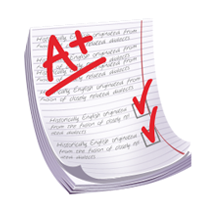The European framework levels
What is the Common European Framework of Reference for Languages (CEFR)?
It is a document that provides a common basis all over Europe for developing programmes, tests, textbooks etc. for learning modern languages. CEFR states what those studying a language must learn and which skills to acquire in order to communicate with those who speak that language.
Lastly, CEFR outlines a graded sequence of common reference levels that precisely describe the achieved competence for those learning a language other than their native tongue.
There are 6 CEFR levels and are used throughout Europe.
What are these levels A1, A2, B1, B2 etc.?
They are the knowledge levels for a language (in this case Italian) as per the Common European Framework.
The CEFR has 6 levels that seem to adequately cover any language learning:
- A1, Break-Through
- A2, Waystage
- B1, Threshold
- B2, Vantage
- C1, Effective Operational Proficiency
- C2, Mastery
To be precise, levels A1 and A2 correspond to an elementary level, levels B1 and B2 to an intermediate level and levels C1 and C2 to an advanced level.
The following is an overall view of the levels, from elementary to advanced, establishing a guideline as to how much and how well one knows a language.
Table 1. Common reference levels: overall grades
Advanced level
C2
Can understand with ease virtually everything heard or read. Can summarise information from different spoken and written sources, reconstructing arguments and accounts in a coherent presentation. Can express him/herself spontaneously, very fluently and precisely, differentiating finer shades of meaning even in the most complex situations.C1
Can understand a wide range of demanding, longer texts, and recognise implicit meaning. Can express ideas fluently and spontaneously without much obvious searching for expressions. Can use language flexibly and effectively for social, academic and professional purposes Can produce clear, well-structured, detailed text on complex subjects, showing controlled use of organisational patterns, connectors and cohesive devices.Intermediate level
B2
Can understand the main ideas of complex text on both concrete and abstract topics, including technical discussions in his/her field of specialisation. Can interact with a degree of fluency and spontaneity that makes regular interaction with native speakers quite possible without strain for either party. Can produce clear, detailed text on a wide range of subjects and explain a viewpoint on a topical issue giving the advantages and disadvantages of various options.B1
Can understand the main points of clear standard input on familiar matters regularly encountered in work, school, leisure, etc. Can deal with most situations likely to arise while travelling in an area where the language is spoken. Can produce simple connected text on topics that are familiar or of personal interest. Can describe experiences and events, dreams, hopes and ambitions and briefly give reasons and explanations for opinions and plans.Elementary level
A2
Can understand sentences and frequently used expressions related to areas of most immediate relevance (e.g. very basic personal and family information, shopping, local geography, employment). Can communicate in simple and routine tasks requiring a simple and direct exchange of information on familiar and routine matters. Can describe in simple terms aspects of his/her background, immediate environment and matters in areas of immediate need.A1
Can understand and use familiar everyday expressions and very basic phrases aimed at the satisfaction of needs of a concrete type. Can introduce him/herself and others and can ask and answer questions about personal details such as where he/she lives, people he/she knows and things he/she has. Can interact in a simple way provided the other person talks slowly and clearly and is prepared to help.Taken from: European Council, Common European Framework of Reference for Languages: learning teaching assessment, Translated from English by Franca Quartapelle and Daniela Bertocchi © La Nuova Italia, Firenze 2002
How do I know what my level is?
Usually when you enrol for a course you are given a placement test to assess your level. If you wish to know your level, you can even do it online on these links:
- University of Siena, http://cils.unistrasi.it/
- University of Perugia, http://www.cvcl.it/categorie/categoria-14
What does pre-A1 level mean, pre-basic, beginner etc.?
Level A1 is the lowest language level. The Swiss National Science Foundation, which has developed and graded CEFR descriptions, has identified a linguistic use, limited to the execution of tasks that match the needs using a series of very restricted and elementary linguistic means. Level “pre-A1” or “pre-basic” corresponds to that of a Beginner and defines a series of useful targets for those starting out to learn another language (e.g. one who can carry out simple transactions, indicating by hand or using other gestures to support verbalisation, is able to execute basic forms of greeting etc.).
If you wish to find a school based on level, click on one of the following.
Courses for Beginners
Courses for A1
Courses for A2
Courses for B1 and B2
Courses for C1 and C2
















